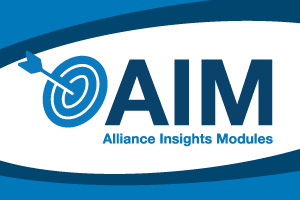
Leadership Lessons from Charlotte’s Web By Zándra Bishop

Charlotte’s Team Dynamics for Today’s Leaders
Inspiration often comes from unexpected places; one such source is the beloved children’s book Charlotte’s Web by E.B. White. Though it seems a simple tale of friendship and farm life, it offers profound lessons about leadership, collaboration, and the power of a supportive community. As business leaders, we can glean valuable insights from this story to enhance our leadership and team-building approach.
The Power of Connection
Charlotte, the wise spider, teaches that effective leadership starts with building solid connections. Her unlikely friendship with Wilbur, a runt pig, showcases the importance of empathy and understanding. Leaders must foster genuine connections with team members, understanding their strengths, weaknesses, and aspirations to create an environment where everyone feels valued. This connection builds trust, the cornerstone of any successful team.
Leading with Purpose
A clear purpose drives charlotte’s unwavering commitment to saving Wilbur. She uses her talents to weave words into her web, proclaiming Wilbur’s greatness. This act of selflessness highlights the importance of having a clear vision and purpose in leadership. A leader’s purpose acts as a guiding light, inspiring and motivating the team. Great leaders lead with intention and inspire others to work towards a common goal.
The Value of Collaboration
“Charlotte’s Web” underscores the power of collaboration. Charlotte enlists the help of other farm animals to save Wilbur, highlighting teamwork’s importance in achieving extraordinary outcomes. In business, collaboration is key to innovation and success. Leaders must encourage a culture where diverse perspectives are valued and everyone is encouraged to contribute, fostering open communication and mutual support.
Resilience in the Face of Challenges
Charlotte faces skepticism and the daunting task of convincing humans of Wilbur’s worth. Despite these obstacles, she remains steadfast and resilient, demonstrating the importance of perseverance in leadership. Business leaders often encounter setbacks. Charlotte’s resilience teaches us that true leaders remain committed to their goals even when the path is difficult, inspiring their teams to stay focused and determined.
Nurturing a Supportive Culture
The sense of community and support in Charlotte’s Web is crucial to the story. The farm animals rally together to help Charlotte and Wilbur, creating a nurturing environment. Leaders play a pivotal role in fostering a supportive culture within their organizations. They create an environment where team members feel valued and motivated by promoting inclusivity, recognizing achievements, and providing growth opportunities.
The Legacy of Leadership
Charlotte’s actions impact Wilbur and the farm, reminding us that true leadership leaves a legacy. Leaders prioritizing their team’s well-being and development create a lasting positive influence. Business leaders should strive to leave a legacy of empowerment, growth, and positive change, ensuring that their leadership continues to inspire and guide even after they move on.
Common Leadership Challenges and Solutions
(1) Maintaining Team Morale
- Challenge: Sustaining high morale during tough times.
- Solution: Regularly recognize and celebrate achievements. Create an open environment for team members to express concerns. Implement team-building activities to strengthen relationships and foster a positive work culture.
(2) Managing Conflict
- Challenge: Conflicts can disrupt productivity.
- Solution: Address conflicts promptly and fairly. Encourage open communication and facilitate mediation if necessary. Teach and model conflict resolution skills.
(3) Delegating Effectively
- Challenge: Struggling with delegation due to a lack of trust or fear of overburdening team members.
- Solution: Understand team members’ strengths to delegate tasks appropriately. Provide clear instructions and support without micromanaging. Trust your team and give them autonomy.
(4) Adapting to Change
- Challenge: Managing rapid changes in the business environment.
- Solution: Foster a culture of adaptability and continuous learning. Communicate changes transparently and involve the team in the transition process. Provide training to help team members adjust.
(5) Balancing Workloads
- Challenge: Ensuring manageable workloads.
- Solution: Regularly assess and redistribute tasks. Encourage team members to speak up if overwhelmed. Use project management tools to keep track of tasks and deadlines.
Unique Best Practices for Effective Leadership
(1) Implement Reverse Mentorship – Younger employees mentor senior leaders, offering fresh perspectives and fostering inclusivity.
(2) Foster a Fail-Forward Culture – Encourage viewing failures as learning opportunities. Create a safe environment for experimentation and innovation.
(3) Personal Development Days – Allocate regular days for team members to focus on professional growth through training or personal projects.
(4) Silent Meetings – Conduct silent meetings where participants write down ideas. This will lead to more thoughtful contributions and ensure everyone’s ideas are considered.
Conclusion
“Charlotte’s Web” may be a children’s book, but its leadership and team dynamics lessons are timeless. By embracing the principles of connection, purpose, collaboration, resilience, and support, business leaders can create thriving teams and foster a culture of excellence. Addressing common leadership challenges with practical solutions and implementing unique best practices further strengthens our ability to lead effectively. Just as Charlotte’s actions transformed lives, our leadership can make a lasting impact on our organizations and the people we lead. Let’s weave our web of inspiration and success in the business world.
####
ZC Consulting LLC, with Zándra Bishop leading the way, brings over 20 years of experience in nonprofit, socially responsible, faith-based consulting, talent strategy solutions, leadership coaching, and retained executive search. They help reduce turnover, develop high-performing teams, create successful succession roadmaps, attract and retain high-potential talent, and empower organizations to scale confidently—transforming intentions into scalable growth.
Discover How to Sharpen Your AIM





